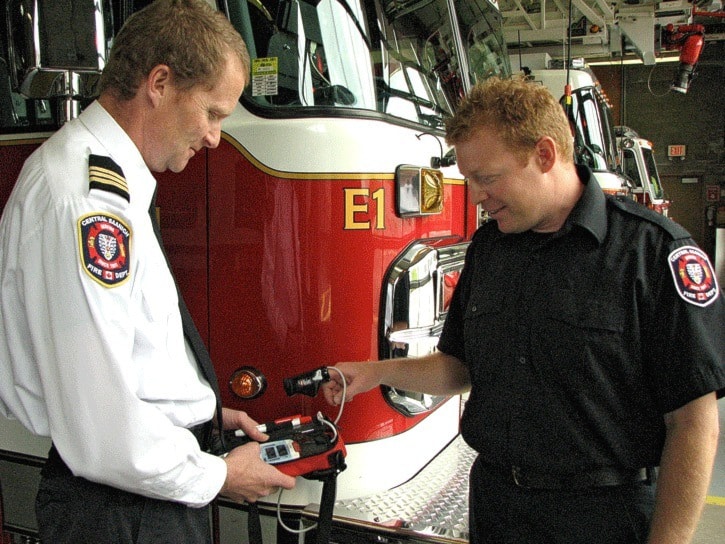The Central Saanich Volunteer Fire Department has purchased a new potentially life-saving device for its firefighters, one they say is the first of its kind to be used in the Capital Region.
The fire department recently acquired a Rad-57 Pulse Oximeter with a Carboxyhemoglobin sensor. The small, non-invasive device detects carbon monoxide levels in a person’s bloodstream using light trasmission, and can be used on the scene of an emergency.
The oximeter, purchased with financial assistance from the Butchart Gardens, cost the department more than $5,000, but John Robertson, assistant fire chief for training and operations, said that the device is invaluable when it comes to the safety of their firefighters.
“Firefighters are at a much greater risk of heart attacks, especially in the 24-hour period after attending a fire emergency,” he said. Robertson said they believe that a contributing factor to this may be high levels of carbon monoxide in a firefighter’s bloodstream.
Dubbed the ’silent killer’, carbon monoxide is a colourless, odourless gas that bonds with hemoglobin in the bloodstream, impairing the cells’ ability to take in oxygen and pass it around the body. Robertson explained that this condition often goes untreated as it is hard to detect.
“Unless a firefighter was showing symptoms (of carbon monoxide poisoning), they normally wouldn’t go to the hospital and get tested,” said Robertson.
The old test for carbon monoxide poisoning available to the department was a time-consuming blood test that had to be sent in to a lab. The new device allows responders to be tested quickly at the scene, regardless if they are showing obvious symptoms or not.
Though it is not as accurate as a blood test, Robertson said that it is a good early screening.
The machine works using beams of light, instead of having to draw blood. A firefighter sticks his finger into the pulse reader, and light is transmitted through the nail bed, measuring the saturation level of carbon monoxide in the cells. Regular pulse oximeters, found commonly among first responders, are also able to measure saturation levels, but are not able to detect whether the cell is saturated with oxygen or the harmful substance.
The machine works instantly, taking only seconds to submit a reading. This becomes most useful during an emergency, where fire crews can test for poisoning during a break before being sent back into the fire.
Robertson said the department is excited to have acquired the small but powerful machine, especially since he said they only know of two others being used on the entire Island.
